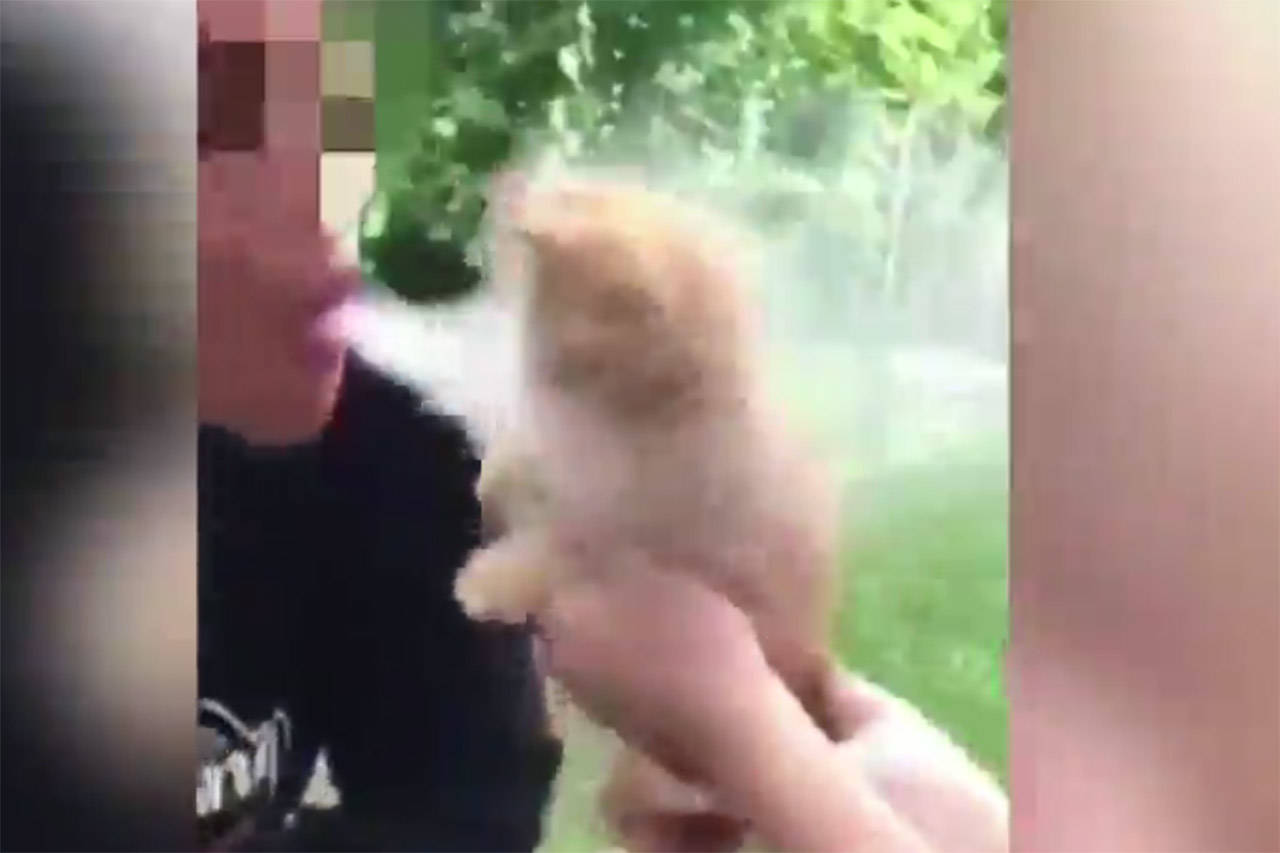A recent video shared online depicting young people blowing bong smoke into the face of a kitten created outrage on social media, followed by a backlash to the backlash.
And all that led to questions about just how well any of us are negotiating these every-evolving platforms of information sharing.
For pet lovers, the video – which is being investigated by the BC SPCA – is hard to watch as the small animal tries to get away but can’t avoid the smoke.
• READ MORE: BC SPCA investigate Chilliwack youth blowing smoke in kitten’s face in videos
For yet others, it’s no big deal: Kids doing stupid stuff as kids have done for generations.
The outrage was not atypical and was immediate as people posted the names of the young people allegedly involved. There was anger and name calling, even threats of violence.
So why do young people share bad behaviour on social media?
Eric Meyers is an associate professor at the University of British Columbia who teaches in the School of Library, Archival and Information Studies, and he says it’s really nothing new.
“The Internet did not create the psychological need to share both your triumphs and your failures with other people,” he said. “There is the social endorsement of sharing these experiences. People get a little bit of an endorphin kick when they find out that 200 people liked their Tweet.”
He said what happened in this case is an example of what academics call “context collapse,” whereby social media interactions involve ever-shifting audiences.
“You send a Snapchat under the assumption that this was going to be a message that was going to be gone in a few moments and instead it is semi-permanent,” Meyers said. “It has life of its own beyond the intended audience and then people are allowed to take it and remix it taking it out of its original context, and then put it on Facebook for a completely unintended set of audiences.”
Darren Blakeborough is an assistant professor of social, cultural and media studies at the University of the Fraser Valley (UFV). He points out that with Snapchat in particular, the platform is sharing between people who likely all know each other more so than Twitter or Facebook, so someone had to consciously grab the video and post it elsewhere.
“Snapchat started with ‘I can show you a photo and then it disappears,’” he said. “But it’s evolved past that and the technology allows us to screenshot or do anything to share.”
The pitchforks come out
There are countless incidents, some that make the news some don’t, of individuals commenting on social media, or sharing videos or just behaving badly while a camera is rolling, that lead to serious real-world consequences.
Recently there was the case of the Mission man who elicited a racist rant, mocking a senior who died when he fell off a float in a Canada Day parade in Abbotsford. The online hordes attacked, and he ended up losing his job.
• READ MORE: B.C. forklift driver fired after racist comments about Canada Day tragedy
For Meyers, again, this isn’t new but the digital age allows for, if not total anonymity, at least the absence of discomfort of having to look someone in the eyes while you tell them they are a bad person. Social media removes the physical or ethical courage required to shame someone and makes it so much easier.
“This both allows a wider audience to participate in the shaming activity with very little accountability for it,” Meyers said.
In the case of the kitten-bong videos, what was particularly striking was the backlash to the backlash.
“Put your damn pitch forks away!” Rebecca Mackinnon wrote.
“Honestly I think going to the police is way too far,” wrote another person. “It was a mistake they made and it’s assured that they’d never do it again. The cat is in a safe place and wasn’t even harmed.”
“Wow, some of you guys are adults,” wrote another. “The way you are acting makes me sick.”
Blakeborough calls this the Trump effect, whereby in the past when the “pitchforks” came out, anyone who might have agreed with those being shamed just sat back and let it happen.
“To me that’s kind of the interesting thing: these perpetrators of this to the cat are actually becoming the victims in a sense.”
He says in some other cases, if not this one, the vigilantism that emerged led to over-the-top efforts to damage reputations, sometimes even criminal harassment.
“Here are a bunch of kids that arguably did something really stupid, but depending on what is happening, you can see sometimes where the punishment tends to significantly outweigh what it is they did.”
Media that’s new to all of us
Shouldn’t young people who grew up in a world surrounded by new media and social media be savvier than older people?
Maybe not, according to Meyers.
While younger people may have increased capacity to use the technology, it doesn’t mean they know what they are doing at a deeper level.
“They are still negotiating with what good social interactions look like. For example, finding stuff online. It seems like kids are really good at finding stuff online but they are really lousy at judging when something is authentic or worthwhile. What does authority look like? What does credibility look like?”
For Blakeborough, a major generational differences has more to do with privacy, and here is where young people are far worse, at least less cautious, than older folks.
“Whenever I talk to ElderCollege about technology, they ask, why do these people do what they do?” he said. “And I generally say, they just have a really different construction of privacy than you do. A lot of them understand that in order to utilize the tools that they do online, they have to give up some of their privacy.
“We want these things for free. We don’t want to pay for Facebook. We don’t want to pay for Snapchat. We don’t want to pay for anything. And we do pay for those with our information.”
Asked if he was hopeful or worried about the future with kids growing up surrounded by these technologies, Meyers said the balance of properly educating young people while we wrestle with reigning in corporate interests means it’s hard to tell what lays ahead.
“I’m hopeful and I would say optimistic about he future of technologies but I’m also very concerned that if things don’t change in the way we think about and address some of these issues at a policy level, we are headed in the wrong direction.”
• RELATED: VIDEO: Teen arrested after allegedly demanding naked photos from 11-year-old boy
@PeeJayAitch
paul.henderson@theprogress.com
Like us on Facebook and follow us on Twitter.

